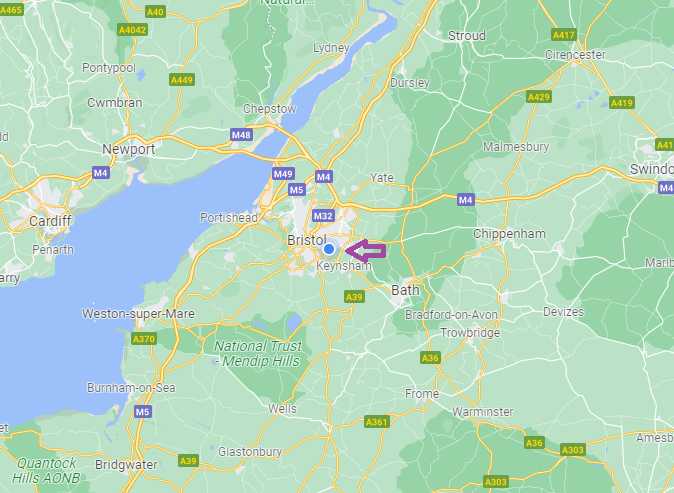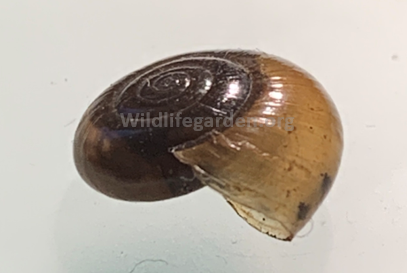The simple aim of this website is to explore, identify and record the diversity of wildlife that either visits or is resident within an urban garden. It is a sad fact that far too many of our native species are in decline throughout the country and especially within their former countryside strongholds. There are numerous and complicated reasons for the general decline in wildlife abundance we have witnessed, especially over the last 70 years. It is not the aim of this website to dwell on these issues, there are plenty of other sites dedicated to such matters.

On this website we hope to focus more on the positive. The impressive array of wildlife that the aggregate of habitats we refer to as the garden can support, in this case an urban garden in the Brislington area of Bristol (UK), see map below. Here we will not simply focus our attention on the obvious species, such as the garden snail (a non-native as it happens), black birds and frogs. But delve deep into the pond scum, the soil and leaf litter, the roots of grasses and the inner spaces of the compost heap.

Our primary aim is to create a species list of all the wildlife that we can find within the boundaries of our garden. The reason for doing this is to set a detailed baseline account of the full diversity within the garden, to track which species move in and which move out over time. Also we hope to demonstrate that the garden, its plants and soils, its water and its artificial structures, can all offer opportunities for wildlife. Only then can we begin to understand what effects changes we subsequently make to our garden may have. Clearing an old pile of rubble and replacing it with a small meadow area may seem like a good idea, but do we know that for sure?
Another reason for doing all this is simply for it’s own sake. There can be considerable enjoyment searching in the undergrowth, looking down a microscope or scanning the internet to find the creature, plant or fungus you’ve stumbled upon for the first time.

As with all things the sky is the limit in terms of equipment, books and resources that can be employed to further our objectives. Yet there is no need to spend large sums of money from the outset. Indeed there is enough wildlife that can be studied without the aid of magnification or lures to keep most people busy for a considerable time. If you think all woodlice are the same or that a wasp is just a wasp, you’re likely in for a surprise.
A secondary aim of this website is to take things beyond the garden. Most towns and cities have green areas that have avoided development and are set aside for quiet enjoyment and wildlife. We are fortunate to have many such areas within a relatively short distance of our garden and it would serve us all well to better understand how our gardens are functionally linked to these spaces. But that’s for the future.
There is a caveat to be attached to all this regarding species identification. Most specialists focus on one or two groups of animals or perhaps just on plants or fungi. And this should come as no surprise. For example there are approximately 280 species of hoverfly alone in the UK, ten times as many moths, and greater still is the number of wasp species. Just to confuse matters there can be considerable variation in appearance within a species and across its age, sex and geographic location. Part of this project is to develop our own skills and record our own observations, but clearly there will be species we cannot identify. Thankfully there is a wealth of help online, in particular social media groups and recording schemes. Yet even then there are many species that require dissection by an expert. On occasion we often make an educated guess as to what something may be and therefore mistakes are likely to occur from time to time. This approach is often frowned upon but our objective is to demonstrate the scale of diversity not simply to put a name to everything we find. However where we are unsure, we label each species as ‘most likely species’ and as we learn more ourselves many of the mistakes will be corrected, so that over time not only will the species list grow but so should it’s accuracy.

It is therefore important to be clear that any mistakes in identification are down to ourselves and not, for example, due to errors in any of the literature we reference. All reference materials we use are listed HERE or if not then noted elsewhere as required.
The core of the site is the Wildlife of the Garden Page where you will locate our full species list and galleries. We also have a blog to keep people updated with how we are getting along, so feel free to sign up.
As noted we want to record our own observations as much as possible and not simply repeat what is already explained on numerous other web sites. This is our own site, from which we make no money, allow no advertising and are not interested in selling any product. We are simply doing this for the fun of it and with the hope it may encourage others to do likewise and perhaps learn from our mistakes!!!
DC 21/12/2021
